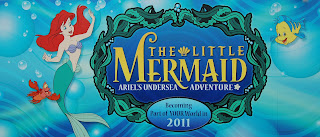At the opposite edge of Grizzly Peak is the Golden Vine Winery, celebrating Napa Valley and the California Wine Country. The main attractions here are the wine tastings and Wine Country Trattoria, a fine dining establishment that feels worlds away from a theme park, but there are also lots of little details around this area.
The main building of the Golden Vine Winery was inspired by California's Mission Period, with red tile roof and Spanish-style architecture. Nearby, an actual mini-vineyard is growing on a hillside. Look for the hawk perch, used to invite birds of prey to help control pests in the vineyard.
Depending on the season, you may actually spot grapes growing on the vines. These aren't plastic. They're the real thing. A sign nearby describes the common varietals grown in California, although the only vine grown here is Johannesburg Riesling, due to its resistance to Pierce's Disease. Anaheim was once a big wine-producing region, until Pierce's Disease wiped out the crop in the 1880s and farmers switched instead to oranges.
A theatrical attraction entitled "Seasons of the Vine" was once presented in the winery's barrel room, a dark space populated with oak barrels, an antique wine press and a cabinet filled with cooperage tools for barrel making. In the show, a vineyard host would welcome guests, and then proceed to open a pair of large doors at one end of the room, revealing an expansive vineyard beyond (actually rear-projected HD video). The scene magically dissolved into a seven-minute presentation on the craft of making wine.
Today, the former "Seasons of the Vine" theater is home to the Walt Disney Imagineering Blue Sky Cellar, a preview center for all the new development now happening throughout Disney California Adventure. You can take a virtual peek into the Blue Sky Cellar at the preview site, here.
Around the corner from the winery is a nod to the Bay Area, with a row of classic Victorian residences reminiscent of those built in San Francisco in the early 1900s. The facades hosted a short-lived video game arcade during the park's X Game Xperience event in 2003. Today, they house expanded area restrooms built to handle the increased attendance driven by the addition of the World of Color nighttime spectacular on nearby Paradise Bay.
The focal point of the Bay Area district is the replica of the famous Rotunda from San Francisco's Palace of Fine Arts. The original was created for the 1915 Panama-Pacific Exposition. The Disney California Adventure version served as the entrance to Golden Dreams, a film attraction which highlighted the people and events that helped shape the unique character of the state of California.
The film, shown in a large Art Deco theater, was hosted by Calafia, the "Queen of California," as portrayed by Whoopi Goldberg. The story covered ground from Native Americans and Spanish missionaries to Chinese railroad workers and Cesar Chavez, Gold Rush and Hollywood pioneers to visionaries like John Muir and Steve Jobs. The presentation concluded with a musical montage of famous faces and events (similar to that at the end of The American Adventure at Epcot), set to the song "Just One Dream."
Golden Dreams saw its last performance in 2008, but the Rotunda still stands. Soon, it will represent a transition from the Bay Area to Paradise Pier and the grand Victorian aquarium where guests will experience one of the park's newest attractions, The Little Mermaid: Ariel's Undersea Adventure.















































